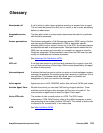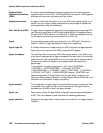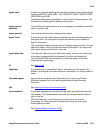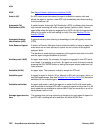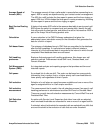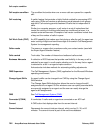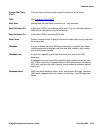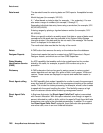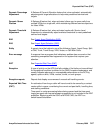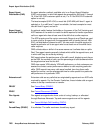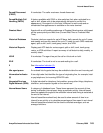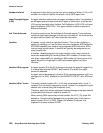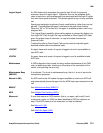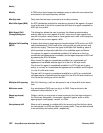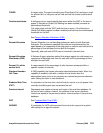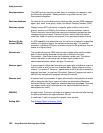
Expected Wait Time (EWT)
Avaya Business Advocate User Guide February 2006
147
Dynamic Percentage
Adjustment
A Release 9 Percent Allocation feature that, when activated, automatically
adjusts agents’ target allocations to help meet predefined service level
targets.
Dynamic Queue
Position
A Release 9 feature that, when activated, allows you to queue calls from
multiple VDNs to a single skill, while maintaining different service objectives
for those VDNs.
Dynamic Threshold
Adjustment
A Release 9 feature that, when activated, works with Service Level
Supervisor to automatically adjust overload thresholds to meet predefined
service level targets.
EAD See Expert Agent Distribution (EAD)
.
EAS See Expert Agent Selection (EAS)
.
Entity A generic term that refers to one of the following: Agent, Agent Group, Split
or Skill, Trunk, Trunk Group, VDN, Vector, or Call Work Code.
Error message A response from a program that indicates a problem has occurred or that
something unexpected has happened on the system that requires your
attention.
EWT See Expected Wait Time (EWT)
Exception A type of activity on the ACD that falls outside of the limits you have defined.
An exceptional condition is defined in the CMS Exceptions subsystem, and
usually indicates abnormal or unacceptable performance on the ACD by
agents, splits or skills, VDNs, vectors, trunks, or trunk groups.
Exception reports Reports that display occurrences of unusual call-handling events.
Expected Wait Time
(EWT)
An estimate of how long a caller will have to wait to be served by a contact
center while in queue, considering the current and past traffic, handling time,
and staffing conditions.
Time spent in vector processing before being queued and the time spent
ringing an agent with manual answering operation is not included in the EWT
prediction. Beginning with the G3V5 and R3V5 CMS, the EWT is a
switch-based calculation.



